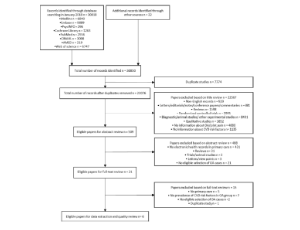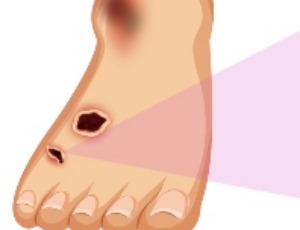Loading
Journal of Diabetes and Clinical Research
ISSN: 2689-2839

2021
Volume 3, Issue 3, p55-93
Articles published in this issue are Open Access and licensed under Creative Commons Attribution License (CC BY NC) where the readers can reuse, download, distribute the article in whole or part by mentioning proper credits to the authors.
Lessons from My Grandmother’s Garden: Intergenerational Learning and Managing Type 2 Diabetes
Jasmin Tahmaseb McConatha, Melina McConatha, Nikki DiGregorio
Researchers suggest that grandmothers are often the invisible support helping to maintain the health and well-being of the family and community. Studies have explored the important role that grandmothers play in the well-being of families over time.
J Diabetes Clin Res, 2021, Volume 3, Issue 3, p55-58 | DOI: 10.33696/diabetes.3.039
Screening of Peripheral Arterial Disease in People with Type 2 Diabetes Mellitus – A Commentary Article
Nahid Hashemi-Madani, Mohammad.E. Khamseh
Peripheral arterial disease (PAD) is a prevalent form of atherosclerotic vascular disease in type 2 diabetes mellitus (T2DM). Diagnosis and treatment of PAD is more challenging in these patients. Presence of concomitant neuropathy masks typical pain symptoms, and typical criteria for intermittent claudication are not clearly met.
J Diabetes Clin Res, 2021, Volume 3, Issue 3, p59-63 | DOI: 10.33696/diabetes.3.040
Dysregulation of the OGF-OGFr Pathway and Associated Diabetic Complications
Patricia J. McLaughlin, Joseph W. Sassani, Ian S. Zagon
Diabetes is a major healthcare concern worldwide. In addition to the financial burden estimated at $760 billion, the human suffering related to complications of diabetes as well as the disease itself are immense. Complications associated with diabetes affect both men and women, but there is a higher incidence reported in the aging population, women, and people of color.
J Diabetes Clin Res, 2021, Volume 3, Issue 3, p64-67 | DOI: 10.33696/diabetes.3.041
Prevalence of Cardiovascular Risk Factors in Osteoarthritis Patients Derived from Primary Care Records: A Systematic Review of Observational Studies
Xiaoyang Huang, Ross Wilkie, Mamas A Mamas, Dahai Yu
Health intelligence on the frequency of cardiovascular disease (CVD) and its risk factors identifies targets and populations for preventative strategies and allows evaluation of health outcomes, behaviors and interventions in populations and health care settings.
J Diabetes Clin Res, 2021, Volume 3, Issue 3, p68-77 | DOI: 10.33696/diabetes.3.042
Epidemiological Characteristics of Diabetic Foot and Affecting Factors for Amputation in China
Weibo Zhao, Zhangrong Xu, Aihong Wang
With the increased prevalence of diabetes from 0.67% in 1980 to 11.2% in 2017, the prevalence of diabetic foot has been growing in China in recent years. Diabetic foot ulcer (DFU) was one of the most serious complications of diabetes. Complicated general condition, severe infection and poor outcomes were feature characteristics of Chinese DFU patients.
J Diabetes Clin Res, 2021, Volume 3, Issue 3, p78-80 | DOI: 10.33696/diabetes.3.043
Commentary on Once-Weekly Semaglutide in Adults with Overweight or Obesity
Erica M. Garner, Kevin D. Niswender, Gitanjali Srivastava
Obesity is an undertreated global epidemic that increases morbidity and mortality by causing widespread harm to multiple organ systems. Severe obesity or obesity with associated comorbidities warrants a comprehensive treatment approach including lifestyle modifications plus either bariatric surgery or prescription medications.
J Diabetes Clin Res, 2021, Volume 3, Issue 3, p81-84 | DOI: 10.33696/diabetes.3.044
New Recommendations for T2D Management: Beneficial Impact of Exerkines on Pancreatic β-Cells Function and Glucose Homeostasis in Skeletal Muscle
Allan LANGLOIS, Julie VION, Aurore DUMOND, Michel PINGET, Karim BOUZAKRI
Nowadays, physical activity is strongly considered as an effective strategy in both preventing and treating type 2 diabetes (T2D). Indeed, it is well established that exercises improve β-cell insulin signaling, insulin secretion, prevent pancreatic β-cell failure and impacts glucose homeostasis regulation in T2D patients.
J Diabetes Clin Res, 2021, Volume 3, Issue 3, p85-93 | DOI: 10.33696/diabetes.3.045
Recommended Articles
Platelet Hyperactivity and Dysfunction in Diabetes and Cancer
However, the entire coagulation cascade is dysfunctional, in progressed chronic diabetes and cancer patients.
How Traditional Healers Diagnose and Treat Diabetes Mellitus in the Pretoria Mamelodi Area and How Do These Purported Medications Comply with Complementary and Alternative Medicine Regulations
CAM is widely used by patients to treat and prevent certain diseases, providing emotional and physical support [1]. The National Centre for Complementary and Alternative Medicine (NCCAM) defines CAM as a “group of diverse medical and health care systems, practices, and products that are not presently considered to be part of conventional medicine” [2].
Energy Expenditure and Nutrition in Neurogenic Obesity following Spinal Cord Injury
Worldwide, obesity is a public health concern and a metabolic ailment characterized by excessive adipose tissue accumulation resulting from an imbalance of energy expenditure and energy intake [1]. This disorder is a known risk factor for cardiovascular disease, type 2 diabetes mellitus, dyslipidemia, hypertension, and metabolic
Improving Obesity and Insulin Resistance by Targeting Skeletal Muscle MKP-1
Obesity has reached a global epidemic and it predisposes to the development of insulin resistance, type 2 diabetes and related metabolic diseases. Current interventions against obesity and/or type 2 diabetes such as calorie restriction, exercise, genetic manipulations or established pharmacological treatments have not been successful for many patients with obesity and/or type 2 diabetes.
Integrated Community Diabetes Model: Future of Diabetes Services and Way Forward?
Prevalence of diabetes is increasing. Diabetes is more prevalent in the socially deprived, ethnic minority population (based on continuing rise in elderly population, growing obesity and BME groups). Compliance is a major stumbling block in the management of most long-term conditions including diabetes.
Exercise, Strains and Their Impact on Bone Mineral Content and Density Losses
Bone mineral content and density (BMC, BMD) losses, which may subsequently lead to osteopenia and osteoporosis, appear in various disuse (aging, space flight and its analogs, spinal cord injury, etc.) conditions. While diet and hormonal status impact BMC and BMD values, a major factor responsible for these losses are the
The Profiling and Role of miRNAs in Diabetes Mellitus
Diabetes mellitus (DM) is an age-related metabolic disorder affecting 347 million people in modern society. Expanding its prevalence beyond developed countries, DM has emerged as a global public health issue associated with a high morbidity and mortality.
Diabetes Mellitus and Dengue
Diabetes mellitus is a common metabolic disorder that present with abnormal glucose metabolism. This metabolic disease is prevalent in many countries, worldwide. It is no doubt there might be a chance that diabetes mellitus might co-occur with other medical problems.
Exercise Benefits on Alzheimer’s Disease
Alzheimer’s disease (AD) is an age-related neurodegenerative disorder [1] and the most common cause of human dementia, accounting for approximately 60%?80% of cases. It is estimated that more than 30 million AD patients, and the number likely to increase to over 100 million by 2050 because of the increase of the elderly population [2].
Commentary: A Herbal Treatment for Type 2 Diabetes – The Dangers of Adulterated and Falsified Products
In 2018, our group published a letter in The Lancet detailing a case in which a patient had taken a herbal preparation to treat her diabetes [1]. In essence, our laboratory was approached by the treating physician after the patient, a 58 year old lady of south Asian origin with a 30 year history of type 2 diabetes said that, during the previous two years, she had replaced some of her prescribed anti-diabetic medication with a herbal remedy purchased in India.
Obesity, Family History of Diabetes, and Consanguineous Marriages are Risk Factors among Urban Population in South Indian City of Bengaluru
In 2017, approximately 424.9 million adults (age 20- 79 yrs) were affected by diabetes, with 4 million deaths. Global diabetes burden is estimated to increase up to 628.9 million people. Moreover, diabetes care costed approximately $727 billion in 2017.
Cut-off Value of Random Blood Glucose among Asian Indians for Preliminary Screening of Persons with Prediabetes and Undetected Type 2 Diabetes Defined by the Glycosylated Haemoglobin Criteria
Type 2 diabetes (T2D) remains undiagnosed for many years in large number of persons living in developing countries. The cost of diagnostic tests and the invasive procedures involved in conventional screening methods remain a major setback to timely testing
Can Vitamin D Supplementation Reduce Insulin Resistance and Hence the Risks of Type 2 Diabetes?
The question of whether or not correction of vitamin D deficiency might reduce the risks of later type 2 diabetes mellitus (T2DM) has been under debate for many decades. The necessity of vitamin D for normal insulin secretion was first identified experimentally in the 1980s.
Identification of Risk Markers for Poorly Controlled Type 2 Diabetes Mellitus: A Retrospective Cross-Sectional Study with Focus on Quality Assurance Based on Real World Data
Type 2 diabetes mellitus (T2DM) is a metabolic disease defined by hyperglycemia. If not treated, chronic and even short periods (i.e. weeks) of undesirable hyperglycemia increases the risk for developing diabetic microvascular complications such as retinopathy, neuropathy, nephropathy, foot ulcers and amputations, and macrovascular complications such as cardiovascular disease including stroke
Physiotherapy Exercise Program for Managing Adhesive Capsulitis in Patients with and without Diabetes: A Pilot Randomized Trial
Adhesive capsulitis (AC), also known as ‘frozen shoulder’, is characterized by the development of dense adhesions and capsular thickening leading to a progressive and painful restriction of shoulder range of motion (ROM) and functional disability [1]. The onset is gradual, usually occurs between the ages of 40 and 60 years and is more common in females and diabetics.
Oral Lactulose – A Safe and Effective Strategy for the Management of Constipation in Individuals with Impaired Glucose Tolerance and Diabetes
Gastrointestinal (GI) disorders are common, also in persons with diabetes mellitus (DM), and can substantially impact their quality of life. In a representative sample of adults living in the United States, 25.8% of individuals with DM also reported disordered bowel habits and 14.6% experienced chronic constipation [3]. Others have reported an even higher prevalence of constipation of around 30% among patients with DM. While, in some patients, symptoms can be relieved with lifestyle and dietary modifications, many individuals with DM rely on the regular use of laxatives for the management
Commentary on – ISPAD Clinical Practice Consensus Guidelines: Fasting during Ramadan by Young People with Diabetes
This is a commentary on the recent work by our group on fasting during Ramadan by young people with diabetes which was published as ISPAD Clinical Practice Consensus Guidelines. In this commentary, themes of selected studies published following the guidelines release are highlighted.
Hyperglycemia and diabetes in hospitalized patients with COVID-19
The prevalence of diabetes in COVID-19 patients ranges from 5.3% to 58% representing the second comorbidity after hypertension. However, when adjusted for age, diabetes prevalence among COVID-19 patients is similar to its prevalence in the general population.
Risks and Prevalence of Diabetic Retinopathy in Children and Young People with Type 1 Diabetes Mellitus
Type 1 diabetes (T1D) is associated with microvascular and macrovascular complications.Duration of diabetes, poor glycaemic control, high blood pressure and proteinuria are reported risk factors contributing to the development of diabetes related complications.
Skeletal Muscle Weakness Often Occurs in Patients with Myalgic Encephalomyelitis / Chronic Fatigue Syndrome (ME/CFS)
This commentary complements data reported in Clinical Biomechanics [1] reporting reduced maximal handgrip strength in numerous patients with myalgic encephalomyelitis / chronic fatigue syndrome (ME/CFS) in proportion to their lowered maximal physical performances.
About Scientific Archives
Scientific Archives is a global publisher initiated with the mission of ensuring equal opportunity for accessing science to research community all over the world. Spreading research findings with great relevance to all channels without any barrier is our goal. We want to overcome the challenges of Open Access with ensured quality and transparency.
